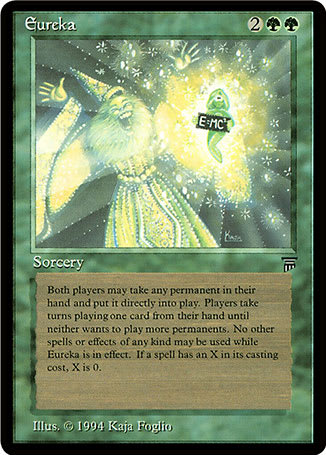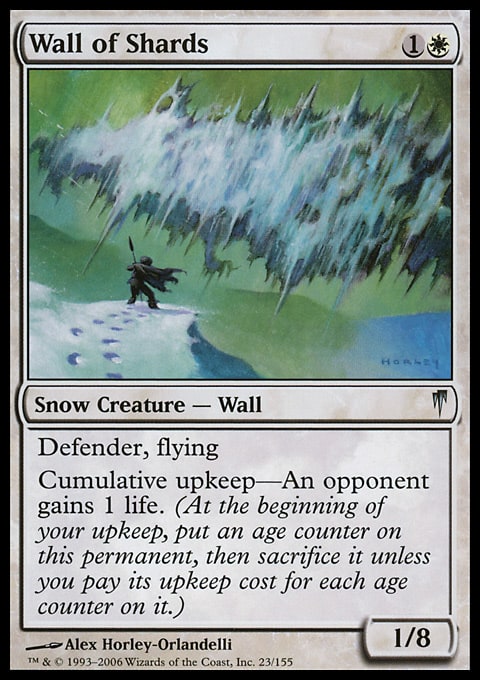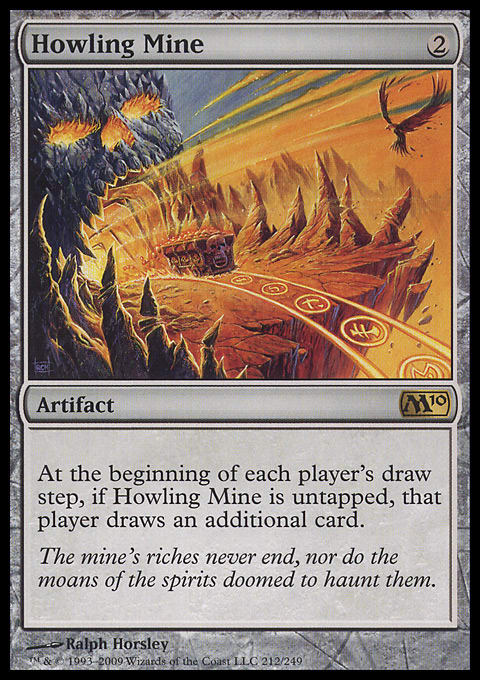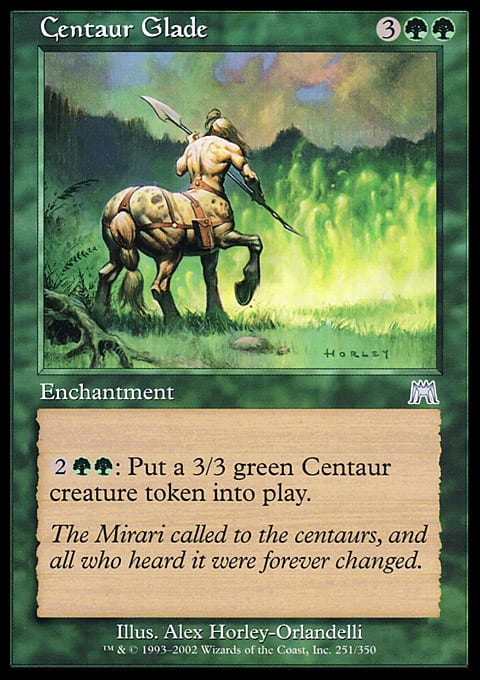In multiplayer, the more enemies you have, the less the game resembles your typical duel. As enemies grow in number, new cards and new strategies are needed to win. The metagame emphasizes defense, the ability to survive, card advantage, and more. Many cards have significantly different power levels.
In the last few weeks, I’ve used this column to look at several different aspects of what makes cards good in multiplayer. We’ve considered rattlesnakes, who send attackers or similar cards to other people because they threaten harm; spiders, who leap out at you from the unknown to slay their prey; and cockroaches, who survive and have abilities that trigger again and again, giving powerful advantages over time.
Today, we are looking at two more types: the pigeon and the plankton. I began writing this article on just the pigeon effect, but I realized that I didn’t have enough space for a full article. I also want to keep bringing up planktons, thus I decided to include both into today’s conversation. These are two additional ways to evaluate cards in multiplayer and their benefit. Today, we’ll look at cards such as Veteran Explorer and Syphon Mind and talk about why they are so good for multiplayer.
What Is a Pigeon or a Plankton?
Imagine plankton. These tiny little animals live at the very bottom of the ocean food chain. They are eaten en masse by countless larger animals. Plankton serves as food for everyone, and they provide foundations for growth. Similarly, a plankton card is one that helps all players. Any player can eat from it. Consider Eureka. When you play this card, everyone can drop his or her nonplaneswalker permanents onto the battlefield. Everyone can send stuff out. Multiplayer has a long history of cards that help everyone seeing play, and for good reason.
Now look at pigeons. These birds live off the structures of the twentieth and twenty-first centuries. They have adapted quite nicely to the large number of people in cities. In fact, you would almost say that the more people in a city, the healthier the vast flocks of pigeons have become. In a similar sense, pigeon cards in Magic improve in quality the more players you have at the table. They scale very nicely in power. A good example is Exsanguinate. The more players you have at the table, the more life loss you will force and thus the more life gain you receive back.
A lot of cards can be pigeons or plankton. Every card type has the potential to be one. From lands (Mikokoro, Center of the Sea) to enchantments (Subversion) and everything in between, you have both pigeons and plankton in each card type.
Remember the key difference, though. Plankton cards help other players, but pigeons scale in power with more players. Good pigeon cards hurt foes, while good plankton cards are helpful, but not such that they hand the game over. Let’s look at some types of each.
One classic type of plankton card is the one that gives people more cards. From Howling Mine to Jace Beleren, there are a ton of options to enable everyone to draw cards. I shy away from these in any deck that is not designed to use the extra cards as fuel for effects such as Underworld Dreams. In a duel, your enemy draws two cards, and you draw two cards. It’s the same as the normal one-to-one ratio. However, in a five-player game, you go from being outdrawn by your enemies by four-to-one to eight-to-two. It might be the same percentage, but it’s a severe upgrade in raw numbers. The more effects of this sort you play, the worse the math becomes.
Another classic plankton effect is the one that enables people to put permanents into play. We’ve already mentioned one of my favorite cards in multiplayer: Veteran Explorer. You also have Show and Tell, New Frontiers, Hunted Wumpus, and many more. These are ways to accelerate either your deck or the game. Some combo decks built around these cards will try to break the one-sided nature of them. For the rest, it’s just a fun way to speed up the game. A dying Veteran Explorer’s two basic lands for every player helps skip past the slow stages of the early game and right into the midgame. I find a use for these sorts of cards often, but not always.
There are several other plankton effects as well. You can have everyone gain life through cards such as Hunters' Feast or Wall of Shards. Or you can have everyone bring back a dead creature by considering Exhume and similar cards. There is a plethora of ways you can help everyone at the table. But the two major ways are spitting permanents onto the battlefield and drawing cards.
My favorite sort of pigeon is the creature that grows bigger the more players we have at the table. One of the first had to have been Lhurgoyf. With a power and toughness each improved by the number of creatures in all graveyards, it’s easy to see how having more graveyards will pump it. Whether we are looking at Multani, Maro-Sorcerer or Beast of Burden, there are many creatures that grow with the number of players at the table. In fact, some of these grow to a size large enough to kill in one hit. I call these cheap creatures—such as Lord of Extinction—player killers.
When a card does not target but it impacts everyone, it scales in power very nicely. Ponder Innocent Blood. This is a 1-mana sorcery that forces everyone to sacrifice a creature. It doesn’t matter if you are facing one opponent or nine—everybody sacrifices. Unnerve forces all opponents to discard two cards, not just one target player. In an odd sense, mass removal spells are also pigeons. They take out more permanents as you add players to the mix. A Wrath of God certainly scales in power as you add more players to the board. In a duel, with three creature son the table, you almost never Wrath unless you are about to die. In multiplayer, even with three creatures on the table, you could still slay eight or fifteen creatures among your opponents, and that’s good math.
Another genre of pigeon cards is the one that exploits opposing resources to gain your own. The obvious subgenre is the life-loss-into-life-gain cards, which we’ve already looked at, such as Kokusho, the Evening Star, Subversion, and Exsanguinate. Syphon Mind turns discarded cards of your foes into cards drawn. Syphon Flesh looks like an Innocent Blood at first, but since you make a dork for every critter slain, it is a more of an exploited resource turned into your gain.
Then there are many cards that aren’t in those three main categories but that are still pigeon cards. Some count up the number of permanents in play (Congregate), others look at the number of players (Benediction of Moons), and some scale in power for other reasons (Luminarch Ascension). (The Ascension is a pigeon because the more players we have, the quicker it makes counters and can become active.) Verdant Force makes more 1/1 tokens, Insurrection steals more creatures temporarily, and Blatant Thievery nets you more things permanently.
Why Do Plankton and Pigeons Work?
We see many decks built around plankton cards. They are often called group-hug decks. Why do they sometimes work? I mean, pigeons are easy to figure out. They work because they are so powerful in multiplayer games. Cards such as Syphon Mind and Wilderness Elemental are so useful because they have massive effects for their investment due to the presence of many players at the table. Pigeons tend to be innately powerful, just by definition.
So why are plankton cards so popular? What makes them tick? From the join forces cards in Commander to Weird Harvest, there are a lot of commonly played plankton. Why?
The first reason is that the synergy of the card can be broken by playing the card in the right deck. While Waiting in the Weeds is a plankton card technically, if you have few foes playing green and you wait to play it until they are mostly tapped out, you are the only one to benefit. In building around the Waiting in the Weeds by maximizing your Forest count, such as by playing Forest acceleration such as Ranger's Path, you end up breaking the equality of the card in question. If you are playing Twilight's Call to allow everyone to return creatures to play, you can add Bojuka Bog, Nihil Spellbomb, and other graveyard cleaners. A lot of combo decks have been built around cards such as Noble Benefactor to fetch the required pieces because you are likely to use the benefit better than your opponents.
Another reason we find Plankton played as heavily as they are is based in politics. If I have a Howling Mine in play, the theory is that I won’t be attacked because the person who wants to attack me is drawing two cards a turn. That person won’t destroy my Mine with that Indrik Stomphowler he just played because other targets are juicier. By playing nice, the goal is to keep me and mine alive.
In multiplayer, I think the best position to be in is the middle. If you appear to be the weakest link, you often see combat because you are open. On the other hand, if you are in the strongest position, you’re often attacked or your stuff is blown up because people fear you. Being in the middle keeps you from receiving too much pressure. The group-hug strategy works because no one considers you a major threat. Now, if you turn around and drop Planar Void and Underworld Dreams to punish with your Rites of Flourishing, you have crossed the line. People will become displeased. Once you do that trick, you won’t be able to pull it off again, and your cads won’t go under the radar.
I try to push into someone who plays Howling Mine because I suspect bad cards for me will follow. Perhaps it’s just someone playing a card to be nice, but even if that’s the case, that person wants to be nice for politics—which is still manipulative. I have no qualms about attacking a player with a Font of Mythos in play. I’ve been around the block a lot in my life, and I’ve played multiplayer games for more than fifteen years. I know what cards trigger my combo-dar, if you will. Different players and playgroups tolerate different levels of these cards. In some, dropping a Kami of the Crescent Moon is a sign that you want to be best friends for life. In others, it’s a clear sign that you expect someone to combo out.
Despite the obvious flaws with many of these cards, they often work. When you play things such as Alliance of Arms, people don’t see you as a threat. Now, if you turn around and drop Eldrazi Monument right after, you might demonstrate that you are not to be trusted with plankton cards, but until you do, you often buy yourself time. A lot of these decks have a nasty, nefarious plan and use the plankton cards as a way to sell you on not attacking their controllers.
However, I think that in reality, most of the times when a plankton card or strategy works, it’s either because it’s been made one-sided by your deck or because you are placing yourself somewhere in the middle of the table in terms of power. You think you are being saved by a Wall of Shards, but in reality, you could have been saved just as much by a Wall of Omens—people don’t see your defender as a threat anyway.
Example Time
Let me see if I can explain that differently with an in-game example.
Suppose each player has eight lands, four cards in hand, ten cards in his or her graveyard, and 20 life.
Bob – Controls Guiltfeeder and Mortivore, which is a 13/13.
Stacy – Controls Sphinx of the Steel Wind.
Rachel – Controls Ghostly Prison, Mind's Eye, and Elspeth, Knight-Errant with 7 counters.
You – Control Rites of Flourishing.
Where will Bob attack this turn? If he attacks Stacy, she can block Guiltfeeder and slay it (Sphinx is both an artifact creature and a black one) and will lose 13 life. If he attacks you, he kills you. If he attacks Rachel, he has to pay 4 mana, but he can kill her as well. Whom does he kill—you or Rachel? Rachel, with all of her powerful permanents, is the greatest threat when looking long-term. Bob will pay 4 mana and take her out now before she draws an answer or uses Elspeth to make a blocker for the Mortivore for next turn, and so forth.
Now, imagine that instead of Rites of Flourishing, you controlled another enchantment that was useful but that helped only you. What if you were controlling a card such as Exploration, Asceticism, Centaur Glade, Sylvan Library, or Holistic Wisdom? Even if you had one of those on the battlefield, you still wouldn’t be the target of Bob’s attack because you aren’t the biggest killable threat out there. In this case, you might even get away with controlling something like Mana Reflection or Mirari's Wake.
Ultimately, this is why I believe group-hug cards often work. Not because opponents want to save someone who’s giving them a benefit (although that happens once in a while), but because the player has put himself in a position that keeps him from being destroyed.
That’s why the plankton effect often works.
Pigeons and plankton are important to understand because they both are capable of turning the tide at a table. While I talked a lot about plankton cards being deceiving because they often aid as an average card (rather than because people want to keep them in the game), there are places for plankton cards. I play Veteran Explorer massively, and cards such as Show and Tell have a purpose at the kitchen table. Similarly, pigeons are very powerful cards that you often find at the top of the multiplayer lists. Classics such as Syphon Mind and Congregate are powerful pigeons that rule the roost of multiplayer.
I hope that you enjoyed today’s discussion about two more ways of looking at multiplayer cards. We have one left: The Gorilla Effect. Then, we will be done, and you can enjoy seeing all six of these animal aspects of cards in play at the same time. Once we look at them all, later in the gorilla article, I’ll show you how cards are often strong in more than one area, which leads to them being strong in multiplayer. Understanding these six card aspects will help you better determine what is good, great, and amazing in multiplayer.
See you next week,
Abe Sargent




























